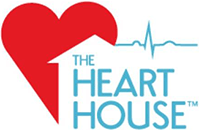Understanding Cosmetic (Spider) Veins
Cosmetic (spider) veins commonly appear on your legs or face as reddish, branch-like veins just below the surface of the skin.
What You Should Know:
Spider veins are small, damaged blood vessels that occur most often on the legs and can look like spider webs or tree branches in appearance. While mostly a cosmetic concern, spider veins may be related to other circulatory issues, such as peripheral artery disease (PAD).
PAD is a common condition where the arteries that carry blood to the arms and legs become narrowed or clogged. Fortunately, this condition can be screened for using a simple, non-invasive diagnostic test called an ankle-brachial index (ABI).
Could PAD be Affecting Your Legs?
Take Our Free Online Assessment to Find Out
Peripheral artery disease (PAD) is a common circulatory condition that can lead to leg pain and walking problems. People with PAD are often asymptomatic at the onset of this condition, so early intervention and testing are critical for improving your heart health. Our easy-to-use online self-assessment can help determine if you may be at risk for PAD and if you should schedule a consultation with a vascular specialist to discuss further testing.
Causes & Symptoms
of Spider Veins
Spider veins develop from a backup of blood, often caused by weak or damaged valves within the venous system. Faulty valves allow blood to flow backward and pool in veins, causing them to enlarge and twist. Genetics, pregnancy, hormonal changes, obesity, sun exposure, and aging are all common causes of spider veins. Prolonged standing and increased venous pressure can also facilitate spider vein development.
When they are first developing, spider veins are typically red and branch out along your legs, thighs, or face. While spider veins are painless for most people, some may experience minor discomfort that worsens toward the end of the day. Cosmetically, spider veins can detract from the appearance of the legs and face, but they do not typically pose any serious medical threat on their own. However, they can be a symptom of underlying vascular conditions. Treatment is sought mainly for improved appearance and relief of discomfort in some cases.
Symptoms of Spider Veins:
- Mild burning or itching in the legs
- Cramping
- Swelling and fatigue in the legs
- A feeling of heaviness in the legs
Testing & Diagnosis for
Spider Veins
Visual examination is the primary method used to test for and diagnose spider veins. The appearance of spider veins is quite distinct - tiny, reddish-purple veins with a tree branch or spider web-like pattern spreading just under the skin surface. They often appear twisted and enlarged. To evaluate for spider veins, the legs and face are visually inspected to look for these classic signs. Measurement of the vein diameter in millimeters can also be done to quantify size. Vein mapping may also be performed to document all visible veins.
If there is any uncertainty upon visual inspection, advanced imaging like Doppler ultrasound may be used to collect more information. Ultrasound assists in differentiating spider veins from other venous insufficiencies, such as varicose veins.
Additional laboratory testing is not typically needed to diagnose spider veins. If your physician suspects that the spider veins are indicative of an underlying condition, such as PAD, further testing and diagnosis may be required.
Treatment Planning for
Spider Veins
In most cases, spider veins are effectively treated for cosmetic reasons using sclerotherapy or lasers. These minimally invasive approaches can successfully reduce the appearance of spider veins on the legs with minimal side effects or downtime.
- Sclerotherapy is the most common and effective treatment. It involves directly injecting a sclerosing agent into the affected veins. The solution irritates and collapses the vein, causing it to scar shut and eventually fade. Multiple treatments are needed, typically every 4-6 weeks, until the veins have cleared.
- Laser treatment is another minimally invasive option that uses light energy to destroy the unwanted veins. A laser fiber is inserted through a tiny needle into the vein, generating heat that damages the vessel. This also results in the vein fading over time.
- Microphlebectomy is a surgical technique to remove larger spider veins through tiny incisions. Using micro hooks, the vein is removed in segments through small punctures, which are then closed with adhesive.
- Embolization is often used for facial veins and is done by injecting a chemical irritant to scar and close the vein. Topical creams can also help with symptoms.
If you are pursuing these treatments for cosmetic reasons, they may not be covered by insurance. However, if your spider veins are indicative of a more severe underlying condition, such as PAD, additional testing and treatment may be covered by insurance due to medical necessity.
Photo Gallery
Video Gallery
Testimonials
Photo Gallery
Risks if Left Untreated
Spider veins are not always suggestive of underlying conditions and often do not have any noticeable symptoms associated with them. However, early intervention and diagnosis can reduce the progression of spider veins and improve the aesthetic appearance of the legs and face.
Get To Know Our Cardiovascular Specialists
In Search of Care? Request a Consultation Today





